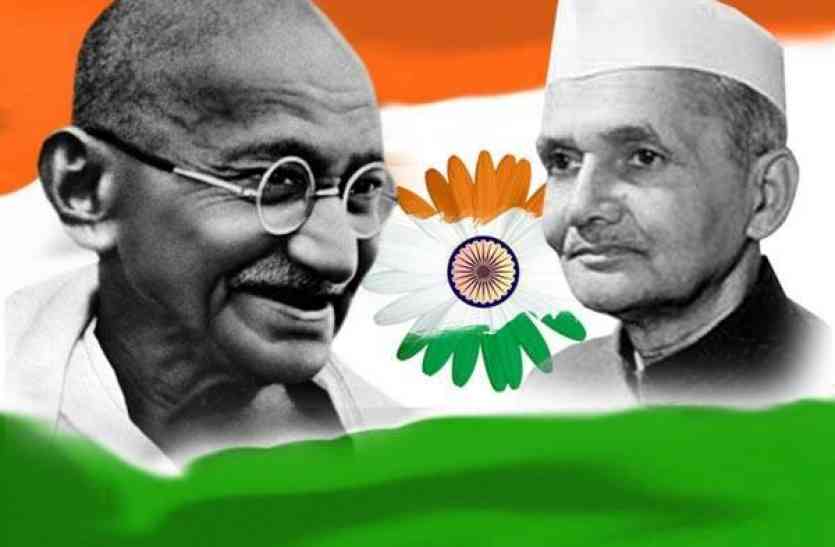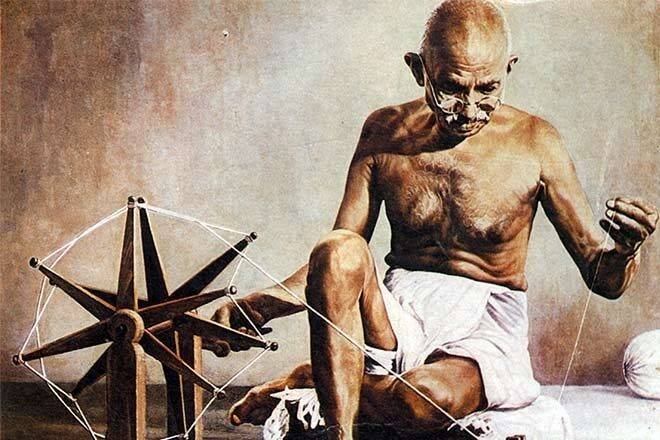October 2 signifies the birth anniversary of Mahatma Gandhi- Father of Nation, and Lal Bahadur Shastri- Second Prime Minister of India. You must have been reading about the two on various platforms since morning, so by now, you would be having a pretty good idea of who these two personalities are. So let us skip that introduction part and come to the main point.
We are about to recall a few of their ideas (in no particular order) with the context of the current scenario of the country.
In 1915, Gandhi returned to India and set about organising peasants, farmers, and urban labourers to protest against excessive land-tax and discrimination.
In 1965, Shastri promoted the Green Revolution in India underlining the need to boost India’s food production.
Current Scenario: In the recently concluded Monsoon session, the Parliament passed three farm reform bills — The Farmers’ Produce Trade And Commerce (Promotion And Facilitation) Bill, The Farmers (Empowerment and Protection) Agreement on Price Assurance and Farm Services Bill, and The Essential Commodities (Amendment) Bill.
https://www.instagram.com/p/CFmOec7qE-5/?igshid=x7ubtxzcinno
The government alleges that the bills are “historic and necessary” for the country to move forward. On the other hand, around 31 farmers’ organisations are on roads to fight collectively against these Bills.
Read: Bharat Bandh: What Compelled Indian Farmers To Lead To Massive Protests?
https://www.instagram.com/p/CFm-ldMKAY5/?igshid=1u3ysvndkk9pi
The urban unemployment in the country crawled up to 9.83% in August as against 9.15% in July, according to monthly unemployment data released by the Center for Monitoring Indian Economy (CMIE).
In 1965, Shastri gave the slogan “Jai Jawan, Jai Kisan” followed by the Indo-Pakistan War in the same year.
Current Scenario: Condition of Kisan you have read above coming on to the Jawan now. Presently India has disputes with almost all it’s neighbours including China, Pakistan, and Nepal. In a deadly clash in the border area between Indo-China troops in June, at least 20 Indian soldiers were killed, as per Indian officials statement. The latest meeting of Senior Indian and Chinese diplomats was held on September 30 in the virtual mode as part of their 19th meeting of the Working Mechanism for Consultation & Coordination on India-China Border Affairs (WMCC). The conclusion of these meetings is still not known. And amid all this, the government is still busy pumping their nasty politics.
In 1921, Gandhi led nationwide campaigns for mitigating poverty, expanding women’s rights, developing religious and ethnic harmony, ending untouchability, and above all for achieving Swaraj or self-rule.
Shastri worked for the betterment of the Harijans at Muzaffarpur and dropped his caste-derived surname of “Srivastava.”
Current Scenario: First, let us talk about poverty:
The exact data of people living under the poverty line in India is difficult to find. According to the joint paper titled Poverty, Inequality and Inclusive Growth in India: 2011/12-2017/18, only 84 million (8.4 crores) Indians are poor. However, believing these data is difficult as in India the on paperwork, and the real ground reports are incredibly different.
Second, women’s rights:
According to the National Crime Records Bureau (NCRB), crimes against women have increased by 7.3% in the year 2019. Forget women’s rights, the condition of women in India can be measured by the fact that in the year 2019, on an average 88 rape cases were recorded every day.
https://www.instagram.com/p/CFyydEMKWWv/?igshid=mmn906jjei51
Third, the Harijans or Dalits
It is a term used for people belonging to castes in India subjected to untouchability, back in historic India but the harsh reality is nothing much has changed. Even today they are seen with similar eyes in some places of the country. According to the NCRB report 2019, crime against Scheduled Castes (SCs) and Scheduled Tribes (STs) saw an increase of over 7% and 26% respectively in the year 2019 compared to 2018.
https://www.instagram.com/p/CFzYMbUjHuo/?igshid=mtj2b77wufz5
https://www.instagram.com/p/CFoeq-PKkEL/?igshid=5xq01zi3hxf0
https://www.instagram.com/p/CFyWYxbq9vZ/?igshid=afctvoznaafm
Out of the total 32,033 reported rape cases in 2019, around 11 per cent of the victims are from the Dalit community as per the NCRB report.
The deep-rooted casteism in India can be witnessed during the clamour of the nation against the Hathras gang rape where the four accused belong to upper castes.
Read: Democracy Goes Crazy: Media Or Opposition Not Allowed To Enter Hathras Victim’s Village
https://www.instagram.com/p/CF2DRyfqV2g/?igshid=3qfi9ai88xkm
https://www.instagram.com/p/CF2BwtuK_6U/?igshid=rdyvoi5ye30s
And finally, the development of religious and ethnic harmony;
Indian mainstream media has played a vital role in uprooting the religious and ethnic harmony of the country. The propagation of political ideologies among the citizens has created such a deep void that may take longer to fulfil.
Read: Desecration Of The Fourth Pillar Of Our Democracy
The aim of making these comparisons is to introspect that where are we heading as a society! Was it this independence for which our freedom fighters shed their blood?









